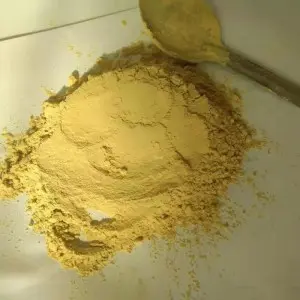Дек . 07, 2024 12:52 Back to list
best apricot pollen for pollination in apricot orchard
Best Apricot Pollen for Pollination in Apricot Orchards
Successful apricot cultivation heavily relies on effective pollination. Pollination is the transfer of pollen from the male parts of a flower to the female parts, leading to fertilization and the eventual development of fruit. Apricot (Prunus armeniaca) trees, being predominantly self-pollinating, can still greatly benefit from cross-pollination, which can enhance fruit set, size, and quality. One of the key aspects of achieving optimal pollination is selecting the best pollen sources to maximize yield and fruit quality in apricot orchards.
Understanding Pollination in Apricots
Pollination in apricot trees can either be self-pollination or cross-pollination. While many apricot varieties have some level of self-compatibility, they produce better yields when cross-pollinated with different varieties. For apricot growers, this means that planting compatible pollen donors in proximity to the main apricot varieties can significantly enhance fruit production.
Selecting the Best Pollen Sources
The choice of pollen is paramount in ensuring successful pollination. The best apricot pollen for pollination in an orchard will depend on several factors, including the timing of flowering, compatibility between varieties, and local climate conditions. Here are some essential points to consider
1. Compatible Varieties Certain apricot varieties are known to be good pollen donors for each other. For instance, 'Tilton' is often used as a reliable pollen source for varieties like 'Blenheim' and 'Early Golden'. It is crucial to plant at least two or three compatible apricot varieties to promote cross-pollination.
2. Bloom Timing To ensure effective pollination, it is important to select varieties with overlapping bloom periods. If the flowering times of the chosen varieties do not align, the potential for cross-pollination diminishes. Always check the bloom calendar for specific varieties to maximize the chances of successful fertilization.
3. Beekeeping Practices Pollination is heavily influenced by pollinators, especially honeybees, which are among the most effective pollinators for apricot flowers. Having a healthy bee population in the orchard can significantly contribute to improved pollination. Consider introducing bees or collaborating with local beekeepers during the flowering season to enhance pollen transfer.
best apricot pollen for pollination in apricot orchard

4. Weather Conditions Weather plays a critical role in pollination success. Favorable conditions, being warm and dry during the flowering period, increase bee activity and improve pollen transfer rates. Conversely, rainy or extremely windy weather can negatively affect bee activity and consequently, pollination success. Understanding local climate trends can help growers plan better for planting and timing specific varieties.
Improving Pollen Efficacy
Apart from choosing the right apricot varieties, ensuring that the pollen is of high quality also matters. Factors such as pollen viability, moisture content, and storage conditions can affect pollen performance. Here are some tips to improve pollen efficacy
- Pollen Collection Collect pollen from healthy, vigorous trees. Ideally, pollen should be collected in the morning when it is most viable. Utilize specialized equipment or techniques to ensure minimal damage to the pollen.
- Storage Store collected pollen in a cool, dry place to maintain its viability. Pollen can typically be frozen for longer storage periods, which can preserve its viability until needed in the following flowering season.
- Application For growers who may need to assist with pollination, consider hand pollination methods using collected pollen. This technique can be effective but labor-intensive, so it is typically used in situations where natural pollination is insufficient.
Conclusion
In summary, selecting the best apricot pollen for effective pollination involves understanding the relationships between apricot varieties, their flowering times, and environmental factors. By planting compatible varieties, ensuring healthy pollinator populations, and taking care to support pollen quality, apricot growers can significantly improve their yields and fruit quality. As climate conditions and local ecosystems evolve, continuous research and adaptation will be key in optimizing pollination strategies for apricot orchards. Through informed decision-making, successful apricot farming can thrive, yielding delicious fruits for consumption and trade alike.
-
Pollen Peach Tree for Pure Pollination and High-Quality Peach Pollen
NewsJul.30,2025
-
Premium Cherry Pollen for Pure Pollination & Different Types
NewsJul.30,2025
-
Artificial Pollination Solutions for Various Plant Pollen Types
NewsJul.29,2025
-
Artificial Pollination Solutions for All Plant Pollen Types
NewsJul.29,2025
-
Premium Plant Pollen for Pure Pollination & Pollen Block Solutions
NewsJul.29,2025
-
Artificial Pollination Solutions for Efficient Crop Yields
NewsJul.28,2025